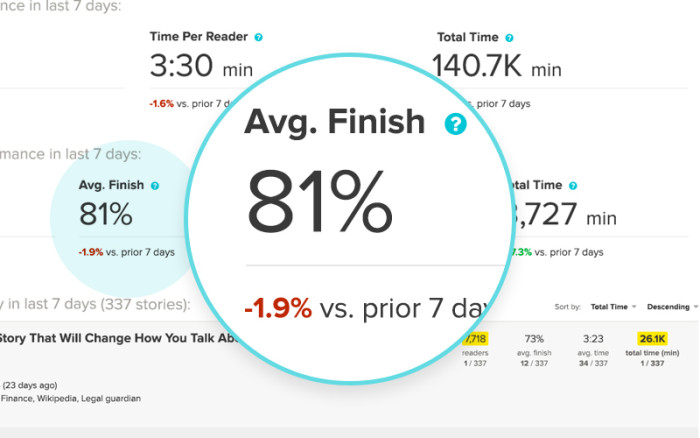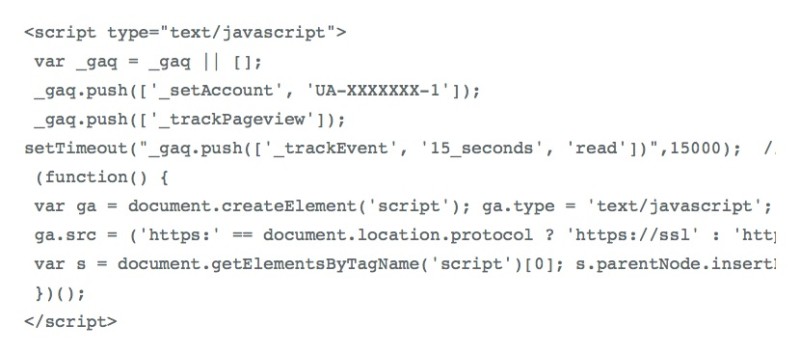According to the Content Marketing Institute’s 2016 Benchmark, Budgets and Trends report, 58% of B2C marketers and 55% of B2B marketers are unclear or unsure what content marketing effectiveness looks like.
While many focus narrowly on content performance based on sales figures—judging content by the number of conversions—this doesn’t account for a weak sales team or a product that isn’t fully ready. So, what other metrics can help us assess content success? I often prefer engagement statistics, and I’m not the only one.
In researching measurement strategies for my own edification, I came across many marketers who’ve gone on record saying they heavily weight things like content completion and time on site. Here are a few cherry-picked perspectives:
Finish rate
In an interview featured on Contently’s Content Strategist blog, Marriott Global Marketing Director Karin Timpone discussed how she measures the success of the hotel’s new content studio. While her ultimate aim is “true loyalty”—encouraging customers to return to Marriott’s hotels throughout their lives—Timpone mentioned that her team is particularly focused on finish rates. This view is shared by Itai Bichler, Head of Global Digital Marketing at SodaStream. In another Content Strategist interview, he described finish rates as his “holy grail” of metrics. If your CMS lacks data on finish rates, you can look for plug-ins like this one.
Adjusted bounce rate
Over on Moz’s blog, digital marketer Rob Beirne dismissed the bounce rate as a valid measurement of content value. His issue: even if a person reads or views something all the way to the end, they’ll be counted as a bounce should they leave without exploring another page. Beirne recommends that instead of counting all site exits, marketers should just count those within a defined period of time. Since the majority of web users bounce from a site in 15 seconds or less, Beirne only includes those people in his bounce rate. You can do the same by following his quick tutorial on how to tweak Google Analytics’ bounce reporting code.
Time on site
OneSpot’s own Ryan Rozich recently discussed engagement metrics in a webinar with former Altimeter Group analyst Rebecca Lieb. Around the 43-minute mark, Rozich advocates using these metrics to evaluate user interest:
- Frequency (average visits per person)
- Depth (average interactions per visit)
- Stickiness (visits greater than one interaction)
With this data in hand, marketers can determine the relative worth (and success) of their content. While various tools exist to help you discover where you’re over- or under-indexed, below is a snapshot of the tool Rozich’s product team created.
OneSpot CEO Steve Sachs elaborates on the benefits of content analysis in this AdAge guest post. He believes that by using the metrics Rozich suggests, brand marketers can get a clearer sense of what to publish next. This isn’t just limited to topics either. Brands could use predictive data to determine optimal content length or media type (video vs. text).
Regardless of how you choose to evaluate the efficacy of your content, it’s important to look beyond revenue. While a sale is a short-term win, increased time spent with your brand could lead to a more lucrative outcome: a long-lasting relationship.


